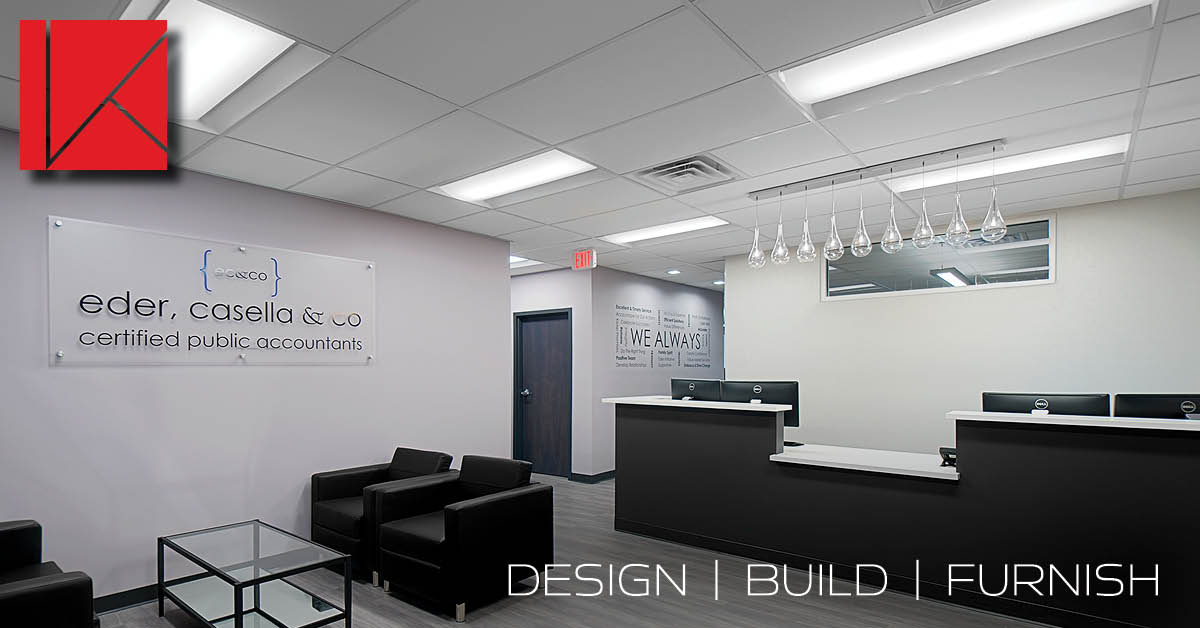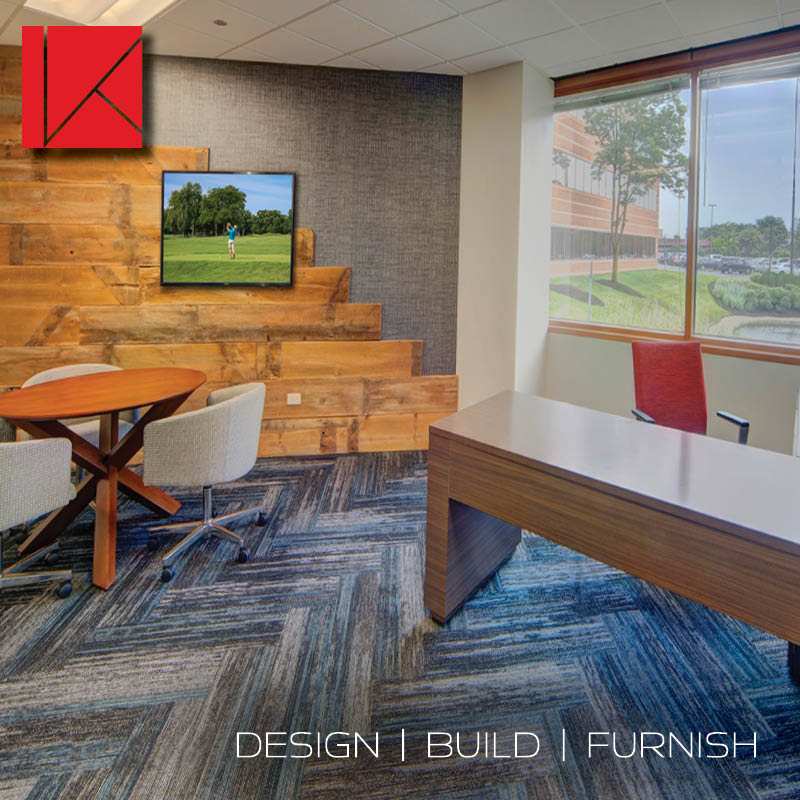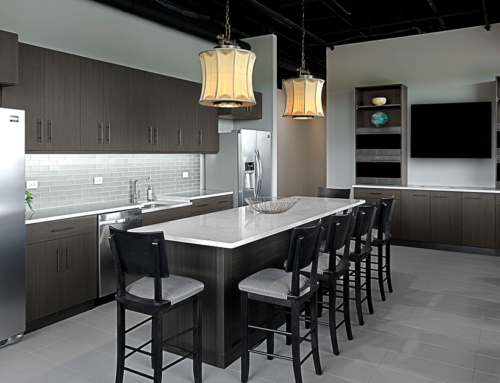Reception Area Design and Build: How to Stick to a Timeline

It’s possible to make an argument that the reception desk is the most important space in any office. Waiting rooms often help form the first impression a client, partner, or new employee has of a company. Additionally, individuals may have to spend 5-10 minutes unattended in a reception area before their appointment begins. So, if your company values getting off on the right foot with visitors, quality reception area design is key.
The most recent need for a reception renovation has been caused by the infamous COVID. Shared spaces in the office environment have been put in the spotlight with a skyrocketing focus on hygiene in the workplace. Office managers and business owners want to redesign their waiting area to have easy-to-clean surfaces and plenty of space for a few people to sit while adhering to social distancing.
Unfortunately, it can be very difficult to schedule much-needed reception renovations. Few businesses can afford to shut down completely for months at a time to complete an office redesign. And reception repairs can be uniquely disruptive to regular business. With that in mind, today we’ll share a few tips on how business leaders can create a renovation schedule –– and stick to it –– when they decide to upgrade their reception area.
Account for Scheduling Variables
When planning an office renovation project, it’s unwise to base your schedule only on the time it will take to complete the actual, physical component of the redesign. That’s because a number of logistical variables can slow down or halt your team’s progress. As such, it’s crucial for business leaders to build variables into their renovation schedule. If you fail to account for material lead times, building permit requirements, engineering issues, lease stipulations, building code standards, bad weather conditions, and/or potential tenant disruptions, then it’s possible (if not likely) that your project will run over schedule.
Avoid High-Volume Periods
Many businesses follow seasonal patterns. Or, at the very least, most companies experience periods of high and low customer volume. If at all possible, avoid scheduling renovations during weeks/months when you know your team will be busy. Planning a renovation during your off-season can minimize the impact on your day-to-day operations.
Note that some businesses choose to schedule the bulk of their renovations at night or on weekends. While this can help expedite the process, hiring contractors to work outside of “normal” hours will cost a premium. So, keep that in mind.
Utilize Alternative Spaces
Some businesses may be able to make use of temporary office spaces or entrances while renovations take place on their regular reception area. Business leaders may also consider using remote technology to complete check-ins with visitors during reception area renovations. Additionally, having certain staff members work remotely for a period of time could free up extra space to use as a “de-facto” waiting area. This may not be ideal, but it could significantly cut down on your renovation timetable.
Break it Up
Occasionally, a reception area may need a complete overhaul and need it ASAP. More often than not, though, businesses can effectively schedule redesigns in phases. By introducing positive changes bit by bit, businesses can improve their reception area design without affecting the regular rhythm of their organization.
Contact the Pros
Overseeing an office renovation calls for a huge commitment of time and resources. Since many business leaders already work 50+ hours a week, it simply may not be possible for them to take on this task as well. The good news is that by partnering with a firm like Key Interiors, professionals can ensure their office design project both 1) fulfills their original vision and 2) is completed on time and on budget. Our team has years of experience completing reception area projects, and we understand the numerous nuances and challenges such undertakings present. You can contact us here to learn more or to get started today!




